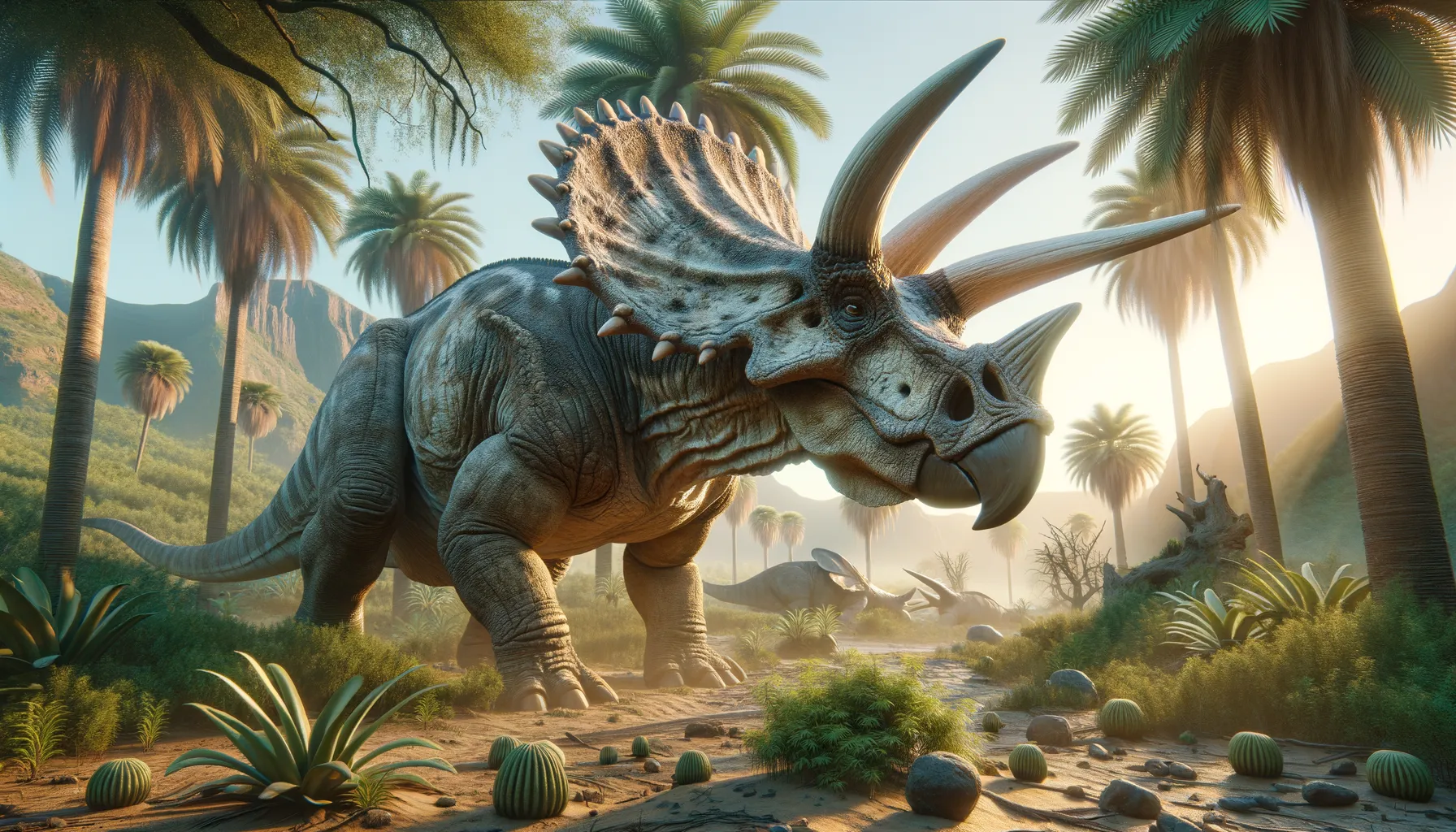
Bravoceratops
A majestic giant of the ancient plains.
Period
Cretaceous
Length
Approximately 20 feet long.
Height
Around 10 feet tall at the shoulder.
Weight
About 5 tons.
Bravoceratops was a large ceratopsid dinosaur with a massive frilled skull, living during the late Cretaceous period. It roamed the area we now know as southwestern United States. As a herbivore, it likely grazed on various plants. Its discovery has provided paleontologists with more insight into the diversity of ceratopsid dinosaurs during the Cretaceous period.
Diet
Bravoceratops was a herbivore, feeding primarily on plant material. It likely consumed various ferns, cycads, and flowering plants available during its time.
Hunting
As a herbivore, Bravoceratops did not hunt. Instead, it would have spent a significant portion of its day foraging for vegetation.
Environmental challenges
Bravoceratops faced challenges from predators like large carnivorous dinosaurs. It also had to adapt to changing vegetation patterns due to climate shifts. Competition for resources with other herbivores was another significant challenge.
Speed
Likely slow due to its heavy build.
Lifespan
Estimated around 70 to 80 years.
First discovery
Described in 2013 from fossils in Texas.
Fun Facts
- Bravoceratops was a large dinosaur with a huge frill and horns, resembling the more famous Triceratops.
- This dinosaur lived about 70 million years ago during the Late Cretaceous period.
- The name Bravoceratops means 'brave horned face', named after the Rio Grande, originally called the 'Rio Bravo'.
- Fossils of Bravoceratops were first discovered in Texas, USA, in 2013.
- Bravoceratops is part of the ceratopsid family, which includes other dinosaurs with distinctive frills and horns.
- Despite its impressive name, Bravoceratops remains a bit of a mystery with only partial fossils found so far.
- Its distinctive features include a large, decorative frill which might have been used to impress mates or deter predators.
Growth and Development
Bravoceratops hatched from eggs, initially small and vulnerable. Young individuals likely grew rapidly in their early years. They might have stayed with their family groups for protection until reaching a size where they could fend off predators.
Habitat
Bravoceratops lived in a diverse ecosystem with rich flora. Its habitat included open plains and forested areas. Water sources such as rivers and lakes were essential for hydration and sustaining plant life.
Interaction with other species
Bravoceratops coexisted with various other dinosaur species. It likely avoided large predators and may have traveled in herds for protection. Interactions with other herbivores could have involved competition for food resources.
Natural lifespan
Bravoceratops could live around 70 to 80 years if not threatened by predators or disease.
Reproduction
Bravoceratops likely laid eggs in nests made in the ground. It is thought that parental care involved protecting the nest and potentially the young after hatching. Social structures might have supported communal nesting sites.
Social behaviour
Bravoceratops may have lived in herds, which provided safety in numbers. Social hierarchies could have existed, determined by size and horn structure. Communication possibly involved vocalizations and visual displays.
Fossil locations
The discovery of Bravoceratops fossils mainly occurred in Texas. These fossils provided critical information about the ceratopsid lineage in North America. Ongoing research continues to uncover more about its distribution and ecological role.
